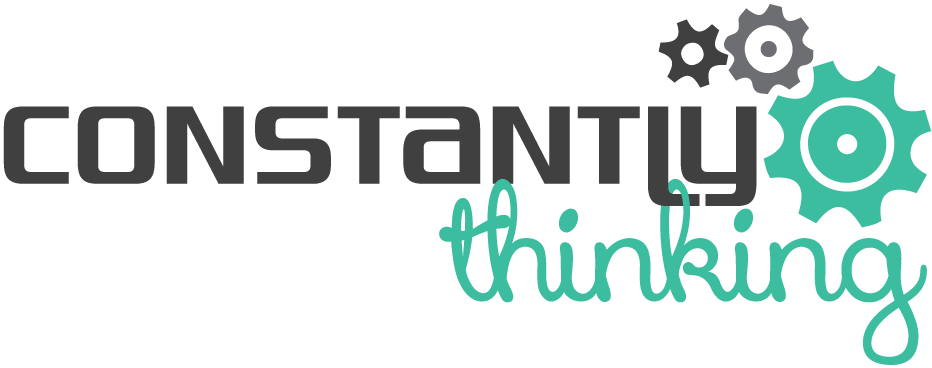
How AI-Powered Financial Planning Tools Are Revolutionizing Retirement Strategies Amid Social Security Changes
Introduction
In an era marked by rapid technological advancements, artificial intelligence (AI) has begun to transform a multitude of industries—including personal finance. One of the most notable shifts is in retirement planning, where AI-powered tools are redefining how individuals prepare for their later years. These innovations arrive at a crucial time: as social security systems face increasing uncertainty, the importance of proactive, personalized, and data-driven retirement strategies has never been greater.
This comprehensive overview explores how AI-driven financial planning tools are revolutionizing retirement strategies, especially in the context of ongoing social security reforms. We will delve into the functionalities of these tools, their benefits, challenges, and future implications—arming readers with the knowledge to make informed decisions about their retirement futures.
The Changing Landscape of Social Security and Retirement Planning
Social Security’s Evolving Role
Social Security has long been a cornerstone of retirement income in many countries, particularly in the United States. According to the Social Security Administration, approximately 66 million Americans received benefits as of 2022, representing about 20% of the federal budget. However, demographic shifts—like increasing life expectancy and declining birth rates—pose sustainability challenges. The Social Security Trustees projected that the combined trust funds could be depleted by 2034 unless legislative interventions are enacted.
Implications for Retirees:
- Reduced Benefits: Potential cutbacks or delays in benefit payments.
- Increased Uncertainty: Variability in benefit amount and timing, prompting individuals to diversify income strategies.
- Need for Personal Savings: Greater reliance on personal retirement savings accounts, investments, and other income avenues.
The Growing Need for Personalized, Data-Driven Planning
Traditional retirement planning methods often relied on static models and generalized advice. Today, the complexity of social security rules, fluctuating markets, inflation concerns, and individual circumstances necessitate personalized, dynamic planning tools. AI-enabled platforms enhance this process, offering tailored strategies based on real-time data, personal goals, and market conditions.
AI-Powered Financial Planning Tools: An Overview
What Are AI-Powered Retirement Planning Tools?
AI-powered financial tools leverage machine learning algorithms, big data analytics, and natural language processing to provide personalized advice, automated modeling, and real-time scenario analysis. Unlike traditional financial calculators, these tools can learn from user behavior, adapt recommendations, and simulate complex future outcomes.
Core Functionalities
- Personalized Goal Setting: Establishing retirement age, expected expenses, legacy intentions, and risk tolerance.
- Income Projections: Estimating Social Security benefits adjusted for legislative changes and personal factors.
- Investment Optimization: Recommending suitable asset allocations based on risk profiles, liquidity needs, and market conditions.
- Scenario Modeling: Simulating impacts of market volatility, inflation, healthcare costs, and policy changes.
- Automated Adjustments: Continually updating strategies as personal or external circumstances evolve.
- Behavioral Insights: Identifying potential biases in decision-making and offering corrective guidance.
Popular Examples
- EquBot’s AI Portfolio Models: Use neural networks to optimize investment strategies.
- Vestwell’s Retirement Automation Platform: Provides personalized savings plans and investment management.
- Here’s My Number: Uses AI to estimate Social Security benefits more accurately based on detailed personal data.
- Personal Capital and Betterment: Incorporate AI-driven algorithms to provide comprehensive retirement and investment advice.
How AI Is Transforming Retirement Strategies
1. Enhanced Personalization and Accuracy
AI-driven tools analyze vast amounts of personal financial data—including income, expenses, savings, debt, health, and family circumstances—to craft highly tailored retirement plans. These personalized models surpass generic advice, accounting for individual nuances.
Reputable Reference: According to a 2022 report by Deloitte, AI personalization in financial services improves client engagement and satisfaction by up to 30%.
2. Dynamic Scenario Analysis and Stress Testing
Retirement portfolios face unpredictable variables—stock market crashes, inflation spikes, policy shifts. AI tools can simulate thousands of scenarios rapidly, helping users understand potential outcomes and adjust strategies proactively.
Visual Content Suggestion: An interactive infographic illustrating a Monte Carlo simulation showing various retirement income trajectories under different market conditions.
3. Better Integration of Social Security Strategies
AI models incorporate real-time legislative data, policy updates, and individual work histories to optimize Social Security claiming strategies—maximizing benefits while considering longevity, taxes, and other factors.
Example: An AI tool can recommend delaying benefits until age 70 for higher payouts or claiming early if cash flow is needed—based on personalized longevity estimates.
4. Reduced Human Error and Behavioral Bias
Behavioral finance studies reveal common biases such as overconfidence and loss aversion. AI tools can detect such biases, offering objective, data-backed suggestions and nudging users toward optimal decisions.
Reputable Source: A 2021 paper in the Journal of Financial Planning emphasizes how AI can mitigate behavioral biases, improving retirement readiness.
5. Continuous Monitoring and Automated Adjustments
Retirement planning isn’t static. AI platforms can monitor market and personal data, adjusting recommendations as circumstances evolve—whether it’s a change in employment status, health, or market conditions.
6. Cost-Effectiveness and Accessibility
These tools democratize access to sophisticated planning—previously available only through high-cost financial advisors. Today, many platforms offer tiered services, making quality planning affordable for a broader audience.
Challenges and Limitations
While AI brings numerous benefits, it is essential to acknowledge certain hurdles:
- Data Privacy and Security: Handling sensitive financial data raises concerns about privacy breaches.
- Algorithm Bias: AI models trained on biased data may produce skewed recommendations.
- Over-Reliance on Technology: Users might overlook traditional financial advice or human expertise, risking complacency.
- Legislative Uncertainty: Social security policy changes can impact AI assumptions, necessitating frequent updates.
- Digital Divide: Not all populations have equal access or familiarity with these technologies.
Reputable Reference: A 2023 study by the Brookings Institution discusses the risks and ethical considerations surrounding AI in financial services.
Future Outlook and Implications
1. Increased Personalization and Holistic Planning
Future AI tools will integrate health data, housing, taxes, and estate planning, providing comprehensive retirement strategies.
2. Integration with Emerging Technologies
Blockchain, robo-advisors, and wearable health devices will connect with AI platforms, enabling more precise planning.
3. Policy Adaptation and Regulation
Regulators will develop frameworks to ensure transparency, fairness, and security in AI-driven financial services.
4. Enhanced User Engagement
Gamification and virtual advisors could improve engagement and adherence to retirement plans, particularly among younger demographics.
Practical Recommendations for Prospective Retirees
- Start Early: Use AI tools to begin planning in your 30s or 40s.
- Update Regularly: Revisit your plan at least annually or after significant life changes.
- Combine AI and Human Advice: Use AI as a foundation but consult financial professionals for complex decisions.
- Prioritize Data Security: Choose platforms with strong privacy policies and security measures.
- Stay Informed: Keep abreast of social security policy changes to understand their implications.
Visual Content Suggestions
- Infographic: Timeline illustrating retirement planning milestones with AI involvement.
- Flowchart: Showing how AI processes personal data to generate recommendations.
- Charts: Comparing traditional vs. AI-driven retirement projections under various scenarios.
- Dashboard Mockup: Demonstrating how an AI-based planning platform displays personalized insights in real-time.
Conclusion
The confluence of AI technology and retirement planning heralds a new era—one characterized by greater personalization, adaptability, and accessibility. In the face of social security reforms and demographic shifts, these tools empower individuals to take control of their financial futures with confidence and precision.
While challenges remain, ongoing advancements and responsible implementation have the potential to make retirement planning more effective and less stressful. Staying informed about these innovations enables consumers to leverage their benefits fully, ensuring a more secure and prosperous retirement.
References
- Deloitte. (2022). The impact of AI in financial services: Personalization and customer engagement.
- Journal of Financial Planning. (2021). Mitigating behavioral biases in retirement planning using artificial intelligence.
- Brookings Institution. (2023). AI and ethics in financial advisory services.
- Social Security Administration. (2022). Annual Statistical Report on Social Security.
- U.S. Congressional Budget Office. (2023). Social Security Policy Options.
Visual Content Note: Incorporate user-friendly diagrams, graphs, and infographics throughout the article, ideally with interactive or downloadable versions for deeper engagement.
SEO Keywords: AI-driven retirement planning, social security changes, personalized retirement strategies, AI in financial advice, retirement savings tools, future of retirement planning, social security policy updates, AI financial advisors.
Final Thoughts
Harnessing AI for retirement planning isn’t just a technological trend—it’s a vital evolution responding to the complexities of aging societies and policy uncertainties. By understanding and utilizing these tools, individuals can craft resilient, personalized strategies capable of adapting to an ever-changing financial landscape.





